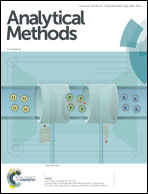Quantitative analysis of soil nutrition based on FT-NIR spectroscopy integrated with BP neural deep learning
Abstract
A framework of back propagation neural deep learning (BPN-DL) was constructed in this work for Fourier transform near-infrared spectroscopy (FT-NIR) to predict the nutrition components in soil samples. Characteristic wavenumbers were selected by the competitive adaptive reweighted sampling (CARS) algorithm, to be the input variables to the BPN-DL framework. With the popular computer hard configuration, BPN-DL models were established and pre-set screening for up to 32 hidden layers and 50 nodes. The results were achieved by iteration and parameter identification. The best optimal BPN-DL model was constructed with 22 hidden layers and 30 neural nodes, with 91 input wavenumbers selected by CARS. The root mean square error of training was 0.104 and that of testing was 0.279. Another available optimal model was with 19 hidden layers and 46 nodes for 216 characteristic wavenumbers. The optimal results were further compared with the benchmark PCR, PLSR and conventional back propagation network models. This study indicated that the FT-NIR analytical model can be optimized and integrated with appropriate chemometric methods, and the prediction accuracy can be improved. The BPN-DL framework reveals its superiority in model training and testing processes.



 Please wait while we load your content...
Please wait while we load your content...